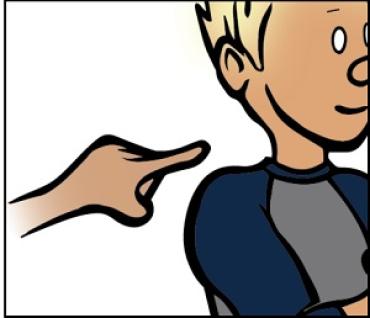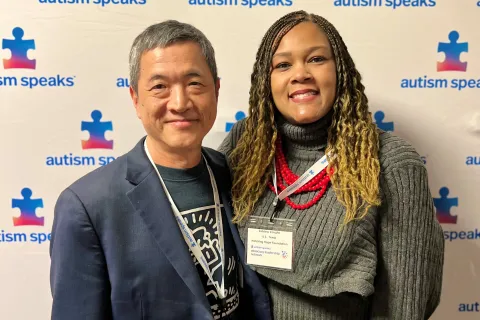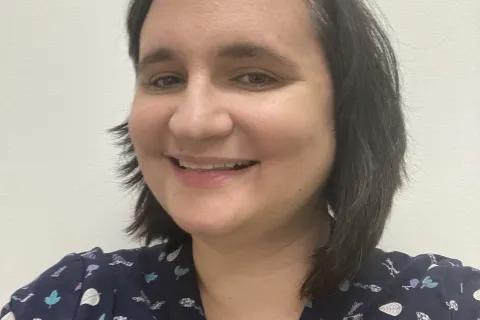Autism and learning to respond to one’s name
Grandparents seek advice on encouraging their grandson to look their way when they call his name; strategies from an expert in the Autism Speaks ATN
By Dr. Kenneth ShamlianThis week’s “Got Questions?” response is by psychologist Kenneth Shamlian, director of the behavioral treatment program at the University of Rochester Medical Center. The University of Rochester is among the 13 sites in the Autism Speaks Autism Treatment Network.
My 4-year-old grandson has autism, doesn’t speak and doesn’t come – or even look up – when we call him. Can you give me some tips to teach him to respond to his name?
Editor’s note: The following information is not meant to diagnose or treat and should not take the place of personal consultation, as appropriate, with a qualified healthcare professional and/or behavioral therapist.
Thanks for your question. It speaks to many of the differences we see in children who have autism. I hear many similar questions from family members (“How do I know we’re connecting if she doesn’t look at me?”) and teachers (Why don’t they seem to listen to me the way the other children do?”).
We don’t have complete answers to these questions. We do know that many people affected by autism learn differently and have particular difficulty with the give-and-take of social interactions.
The good news is that we understand enough about autism and how it can affect the way people learn that we can often teach social skills that don’t otherwise come naturally for those on the autism spectrum.
Ideally your grandson is getting autism-intervention services on a regular basis. The therapist can work with you and/or your grandson’s parents in assessing and personalizing some behavioral approaches to encourage this skill.
I offer some strategies that you and his parents can try at home below.
Strategies to help an autistic child to respond to their name
When teaching a challenging skill – in this case teaching your grandson to respond to his name – I suggest keeping in mind the following differences between “can’t do” and “won’t do.”
Can’t do: In many instances, people who have autism truly fail to understand what’s expected of them – particularly in social situations. They can’t do it (yet) because no one has taught them in a way that makes sense to them.
Won’t do: At the same time, someone on the autism spectrum may not value social interactions and responses the way other people do. So he or she may lack the motivation to respond the way we expect.
In your grandchild’s case, he may not respond to his name because of one or both of these issues. Below are some steps for addressing these challenges as part of teaching him to respond to his name:
I suggest that you start by deciding on some specific days and times when you can focus on practicing this skill with your grandson.
If you suspect that your grandson doesn’t understand the value of responding to his name, we want to find something he does value to offer as motivation. I suggest something you can give him immediately to reward his efforts – something you know he likes. For example, you could reward him with positive attention (hug, high-five, praise, etc.) or a short activity he enjoys (tickle, patty-cake, etc.) or a favorite toy that’s not always available to him.
Teaching with motivation and rewarding success
Once you’re prepared, I suggest the following:
- Look for an opportunity to approach him closely while he is mildly occupied with another activity. (It’s probably best to avoid a situation where he’s deeply engrossed in something like a favorite video.)
- Say his name. After saying the child’s name, immediately tap his shoulder and, if needed, gently guide his face to look at you.
- After you say his name, quickly tap him on his shoulder or gently lift his head to face you. I recommend against requiring direct eye contact, as it can be truly uncomfortable for some people affected by autism.
- As soon as he looks towards you (even inadvertently), provide the rewarding activity or item along with immediate praise such as “nice responding to your name.
Allow him to return to his previous or another activity. This resets the opportunity for more practice.
How often you repeat these steps will depend on how much time you have with your grandson and can devote to practice. For example, if you had a full day with your grandson you may be able to repeat these steps 10 to 20 times, or more. If you only have an hour, a good pace may be a minute or two between each time you call his name. If you see a clear decrease in interest, I suggest taking it as a sign that it’s a time for a break – particularly if he was initially excited about the new activity.
Keep practicing until you see he’s responding to his name before you have to tap him or guide him to look at you.
We use this strategy frequently in our clinic. In most cases, we see children begin responding to their names within a few hours of practice, or 20 to 60 attempts. If your grandson doesn’t seem to be catching on at first, take a break and return to practicing next visit. Some children simply need more practice.
We’ve also found that some simple changes can often help improve response time. For example, look around the room or situation and consider what’s competing for your grandson’s attention. Consider finding someplace with fewer people and things of interest.
Expand distance, people and places
First, I suggest confirming that your grandson is ready for these next steps by approaching him closely and calling his name – without tapping him or guiding his face. Wait a few seconds, still standing close, to see if he turns to look toward you. If he doesn’t, keep up with the physical cues as before.
If he is responding fairly consistently without the need for the physical cue, I suggest the following:
- Try the above exercise in different places, for example, when you’re at the dinner table or in the kitchen together, or even outside in your backyard or the store. Don’t hesitate to praise and reward even the slightest turn in your direction.
- Include other people in this exercise. We want your grandson to respond to his name with as many people and in as many places possible. Again, praise and reward.
- Once your grandson is responding to his name in different places and with other people, try increasing your distance when you call his name. Start with a few steps away, progressing to across the room and then across the yard. You get the idea. Remember to provide that immediate praise and encouragement for any response.
- Continue practicing from increasing – but always safe – distances, in new places and with new (trusted) people.
In closing I want to say again how much I appreciate your question as a great example of the importance of family involvement in helping children with autism build the foundational skills they’ll need for success in life. By helping your grandson learn to respond to his name in different situations, you will help set the stage for other important social skills, greater safety and above all better relationships.










